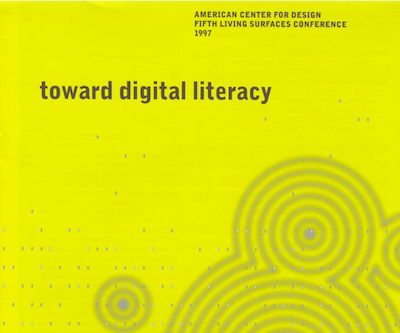Bringing Systems into the Practice: Donella Meadows
Written by Erin Malone
Systems thinking, pioneered by Donella Meadows and her seminal book Thinking in Systems (2009), has been adopted and taught across many programs for interaction design, HCI, and informatics. Systems thinking helps expand the minds of designers beyond the screen, beyond the application, and into the larger context of where their work sits. Designers have realized that the person using the digital screen exists within a larger scope of experiences and those interactions have impact and implications for these larger ecosystems.
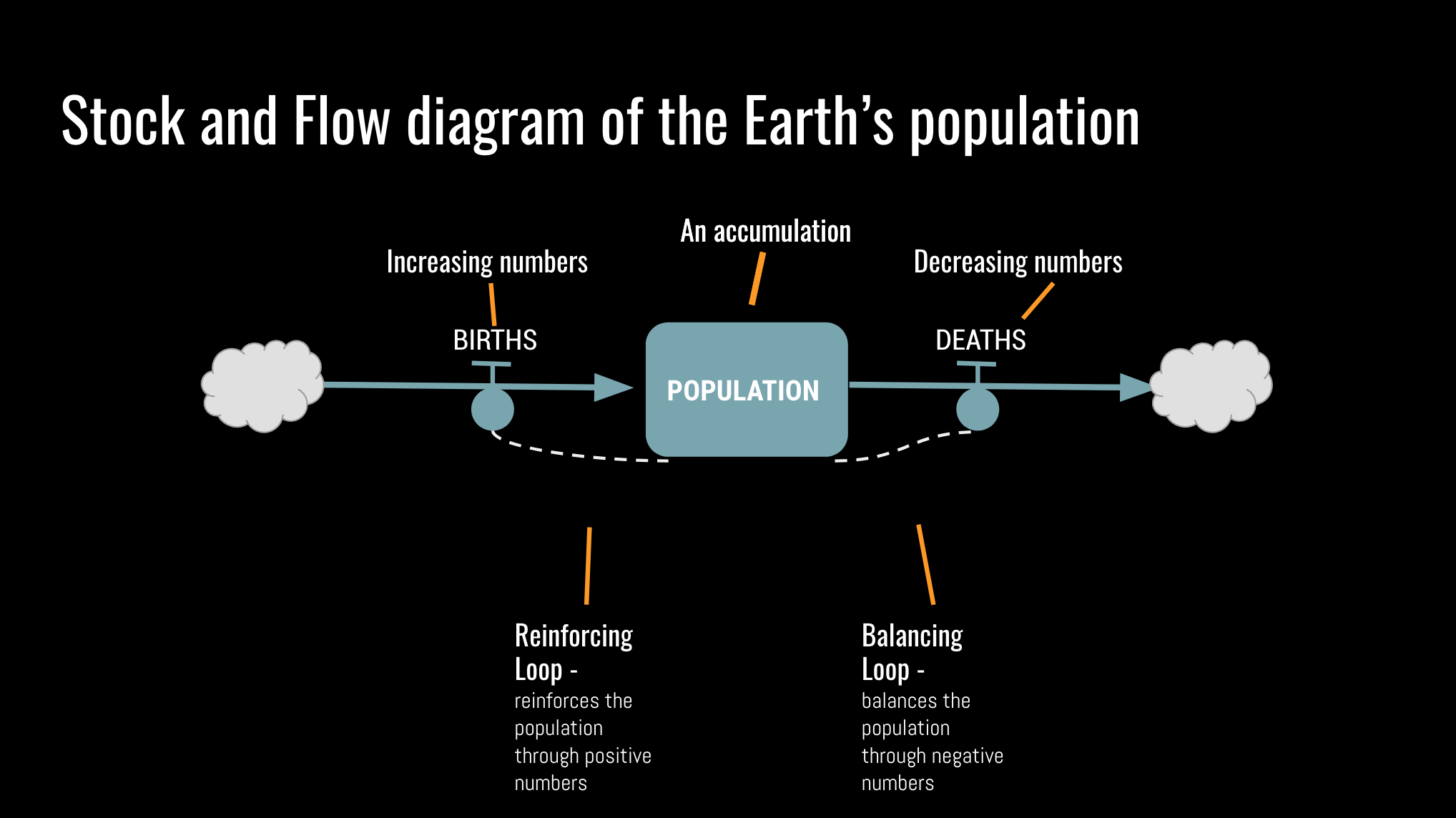
A classic Stock/Flow diagram based on concepts from Donella Meadow's book Thinking in Systems. The diagram by Erin Malone, was put together to help teach her students the concepts of loops.
Dr. Donella Meadows
Donella Meadows was not an interaction designer nor an HCI scholar, but her work in describing systems thinking and methods for deconstructing and understanding systems has been incredibly influential in the field of Interaction Design. As more and more designers move into designing complex software across touchpoints and move into designing experiences that exist both on and offline, knowledge of systems thinking has become an integral part of how we understand and make change as designers.
Meadows was a Pew Scholar and a MacArthur Fellow and applied her thinking to environmental and sustainability issues. On the faculty at Dartmouth, she also worked with Jay Forrester—who invented system dynamics—at MIT. Meadows founded the Sustainability Institute in 1996 with the goal to foster transitions to sustainable systems across the world—from local to global issues.
Her best-known work—Thinking in Systems: A Primer—was published posthumously in 2008 and pulls together pieces of her most well-known writings including “The Limits to Growth” and “Leverage Points: Places to Intervene in a System.” Meadows began writing the book in 1993[1] but it was not finished before she died. Lead author on the “Limits to Growth,” published in 1972, Meadows describes for a general audience the insights from the “World3” computer model project she worked on with Forrester and others. The book was translated into twenty-eight languages and brought systems thinking to the masses.
Originally trained in chemistry and biophysics, Meadows received her PhD from Harvard University in 1968. She worked as an environmental journalist writing many articles and papers as well as a newspaper column, The Global Citizen, where she commented about sustainability, the environment, and systems thinking. She was also the cofounder of one of the earliest co-housing communities in the U.S.
Meadows’ approach to breaking down systems and her writings about leverage points has been one a key tool for interaction designers working on complex, systemic problems. As designers model systems to understand them, it’s also important to remember that we can’t really control these complex systems and that modeling is just one viewpoint into the relationships and feedback loops of a system. Meadows’ writings have helped designers understand these complexities and given us tools for where and how we might recognize places to redesign.
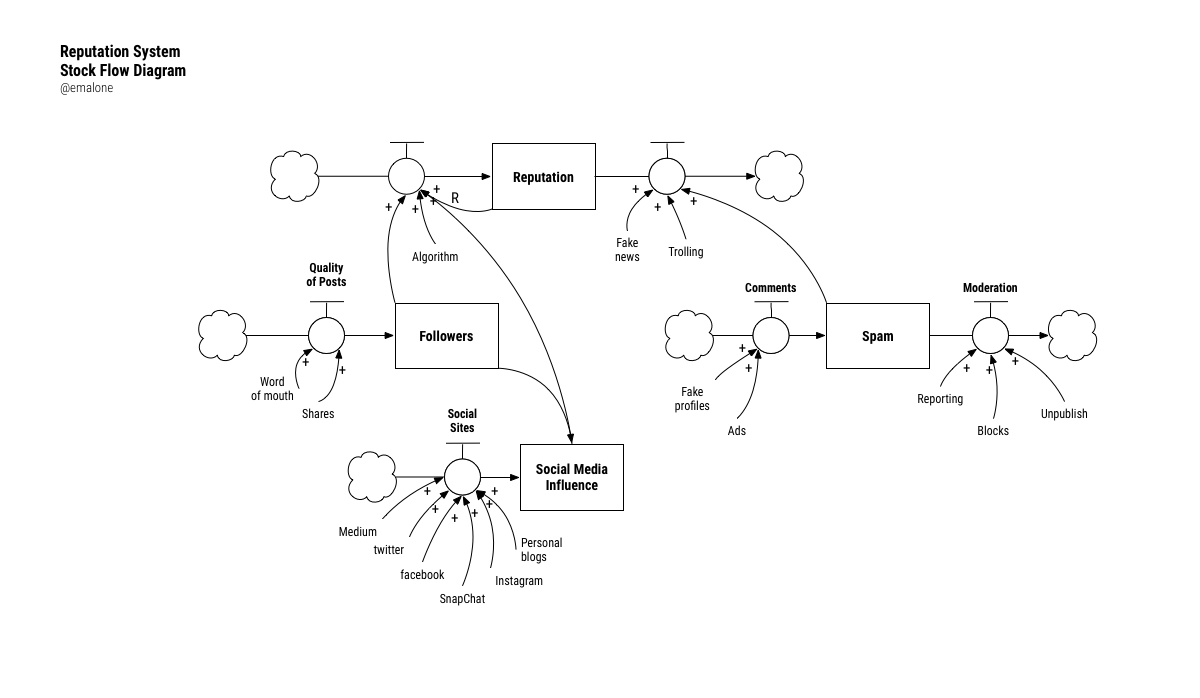
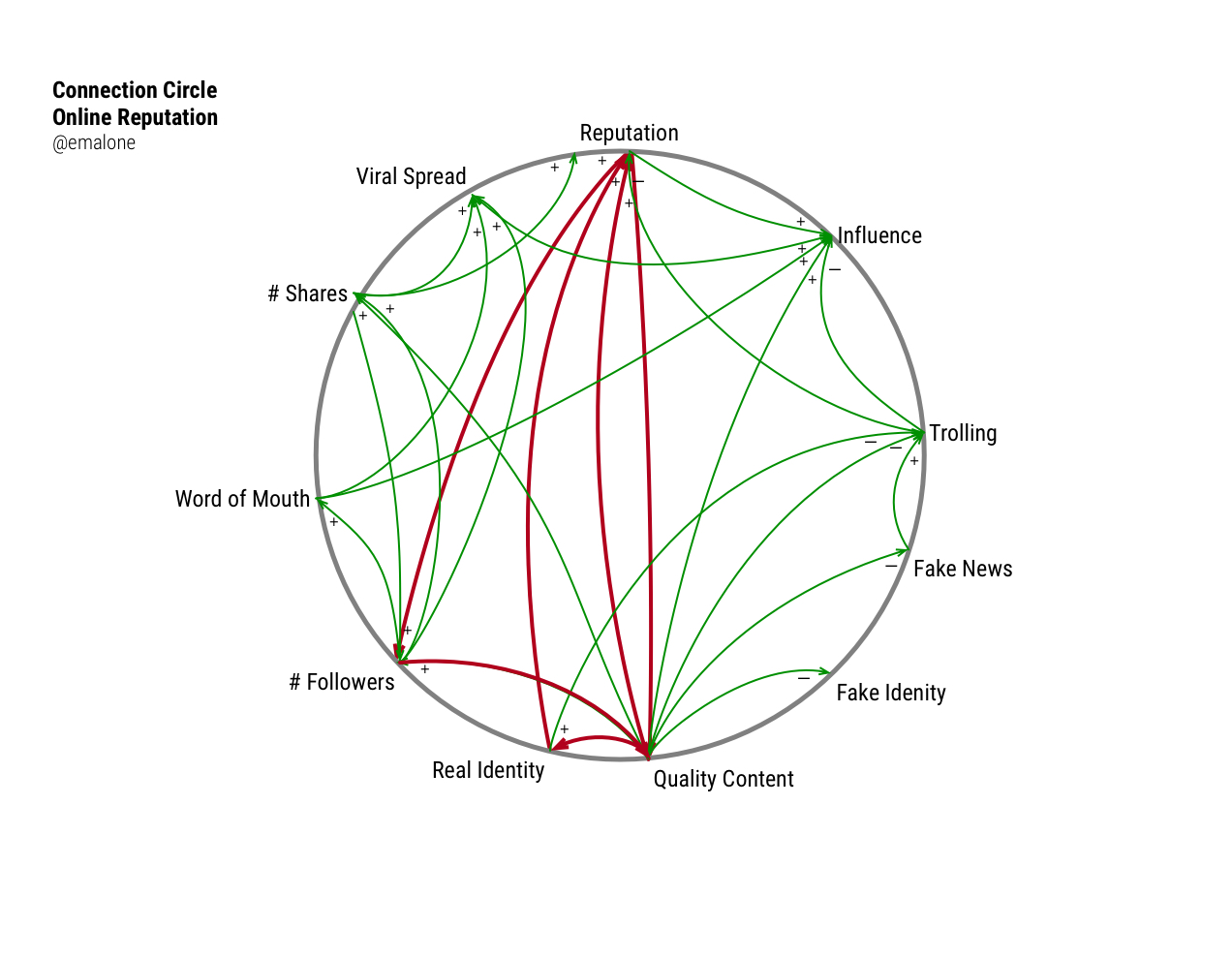
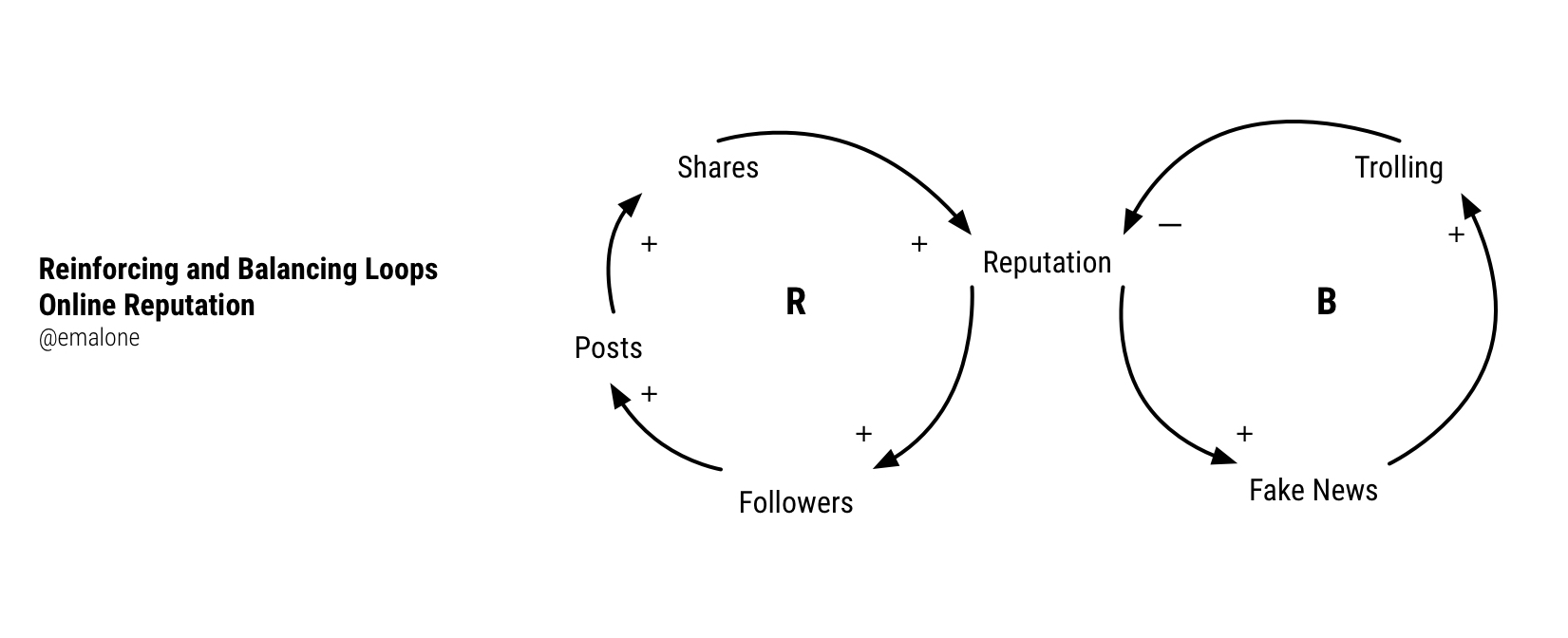
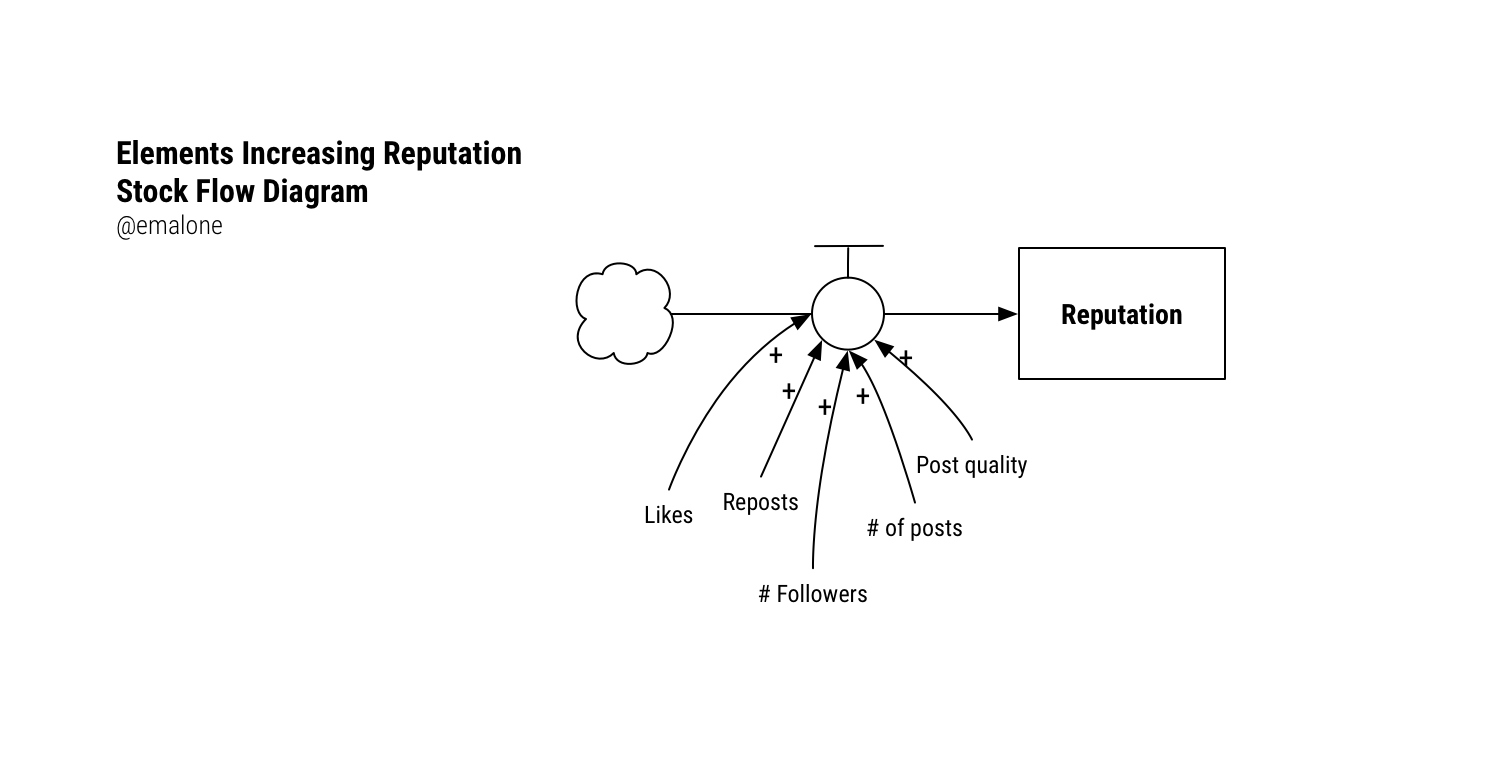
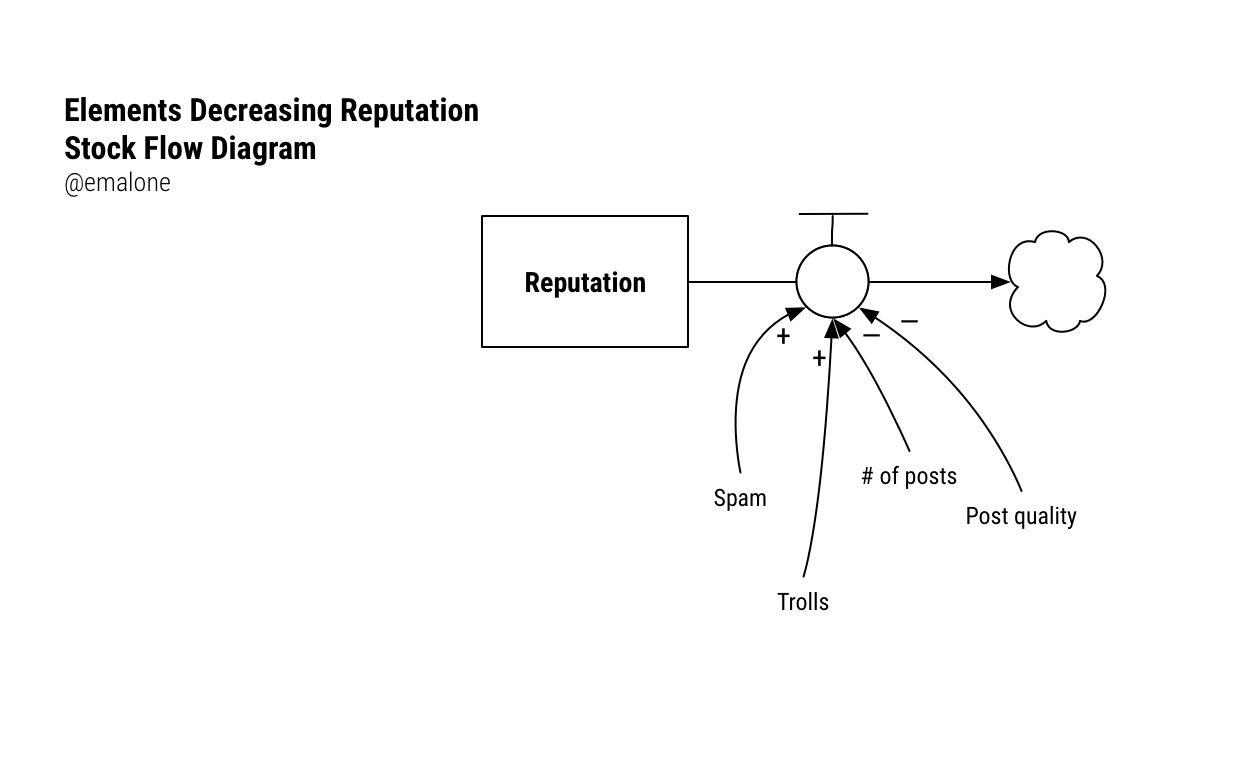
Images: Examples of using the diagramming and modeling techniques described by Meadows to explore a complex system. In this case the system is Online Reputation in Social Spaces. Explorations look at inputs and outputs to the concept of Reputation in a classic stock flow diagram, a connection circle investigating a large number of variables and their relationships in the positive or negative, feedback loops and how various variables affect other variables in these cycles as we look for places to make change and trigger leverage points to modify the system. These diagrams were done by Erin Malone to illustrated the different perspectives of this system in order to help understand it to then consider different ways to design within the system. All diagrams ©Erin Malone 2023.
In “Dancing with Systems”, Meadows writes,
“Systems thinking leads to another conclusion–however, waiting, shining, obvious as soon as we stop being blinded by the illusion of control. It says that there is plenty to do, of a different sort of ‘doing.’ The future can’t be predicted, but it can be envisioned and brought lovingly into being. Systems can’t be controlled, but they can be designed and redesigned. We can’t surge forward with certainty into a world of no surprises, but we can expect surprises and learn from them and even profit from them. We can’t impose our will upon a system. We can listen to what the system tells us and discover how its properties and our values can work together to bring forth something much better than could ever be produced by our will alone.
We can’t control systems or figure them out. But we can dance with them!”[2]
Meadows died in 2001 at the age of 59.
Footnotes:
[1] Steve Schefer, “Jay Forrester (1918 – 2016) and Donella Meadows (1941 – 2001),” Squire to the Giants, December 21, 2016, https://squiretothegiants.com/my-giants/jay-forrester-1918-2016-and-donella-meadows-1941-2001/.
[2] Donella Meadows, “Dancing with Systems,” The Academy for Systems Change, n.d., https://donellameadows.org/archives/dancing-with-systems/.
Bibliography:
- “Donella Meadows.” Cobb Hill CoHousing, 2015. http://www.cobbhill.org/donella-meadows.
- Edberg, Shanna. “What I Learned about Mentoring from My Mentor, Donella Meadows.” www.climateinteractive.org, May 31, 2016. https://www.climateinteractive.org/community/what-i-learned-about-mentoring-from-my-mentor-donella-meadows/.
- Gross, Terry. “Recognizing Earth Day with Donella Meadows.” Fresh Air Archive: Interviews with Terry Gross, April 22, 1992. https://freshairarchive.org/index.php/segments/recognizing-earth-day-donella-meadows.
- “Home.” The Academy for Systems Change. Accessed January 8, 2022. https://donellameadows.org.
- Madrigal, Alexis. “Donella Meadows – HILOBROW.” www.hilobrow.com, March 13, 2010. https://www.hilobrow.com/2010/03/13/hilo-hero-donella-meadows/.
- Meadows, Donella. “Clustering -- Good Idea, Hard to Do.” Grist, June 14, 1999. https://grist.org/article/idea/.
- ———. “Dancing with Systems.” The Academy for Systems Change, n.d. https://donellameadows.org/archives/dancing-with-systems/.
- Meadows, Donella H. The Limits to Growth : A Report for the Club of Rome’s Project on the Predicament of Mankind. New York: Universe Books, 1972.
- ———. Thinking in Systems: A Primer. White River Junction, Vermont: Chelsea Green Publishing, 2008.
- Schefer, Steve. “Jay Forrester (1918 – 2016) and Donella Meadows (1941 – 2001).” Squire to the Giants, December 21, 2016. https://squiretothegiants.com/my-giants/jay-forrester-1918-2016-and-donella-meadows-1941-2001/.
- Silverman, Howard. “What Now? Donella Meadows on Paradigms.” Solving for Pattern, July 1, 2015. https://www.solvingforpattern.org/2015/07/01/what-now-donella-meadows-on-paradigms/.
- Wahl, Daniel Christian. “Donella Meadows Recommendations for How to Dance with and Intervene in Systems.” HackerNoon.com, May 27, 2020. https://medium.com/hackernoon/donella-meadows-recommendations-for-how-to-dance-with-and-intervene-in-systems-92ace21743fb.
- “Women and Life on Earth: Donella Meadows.” www.wloe.org. Accessed January 8, 2022. http://www.wloe.org/Donella-Meadows.173.0.html.
Selected Stories

Sasha Costanza-ChockProject type
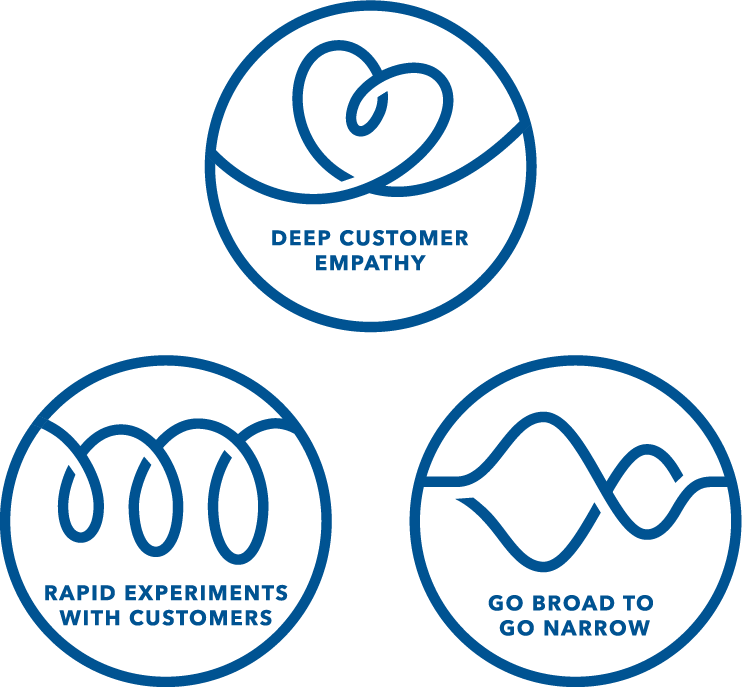
Kaaren HansonProject type

Ari MelencianoProject type

Mizuko Itoresearch
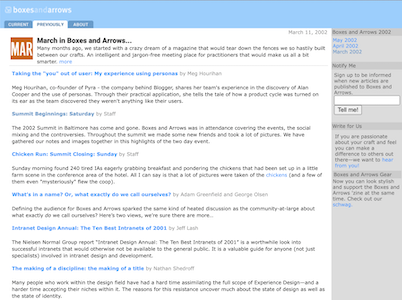
Boxes and ArrowsProject type

Mithula NaikCivic

Lili ChengProject type

Ovetta SampsonProject type
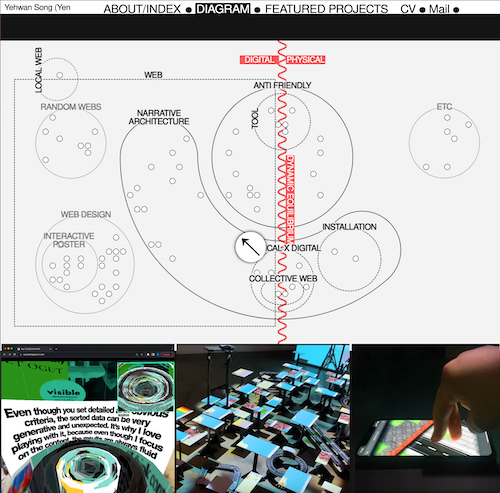
Yehwan SongProject type

Anicia PetersProject type

Simona MaschiProject type

Jennifer BoveProject type

Chelsea JohnsonProject type
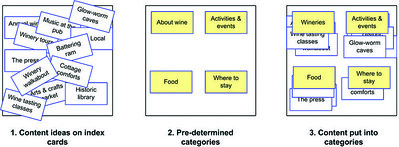
Donna SpencerProject type

Lisa WelchmanProject type

Sandra GonzālesProject type

Amelie LamontProject type

Mitzi OkouProject type

The Failings of the AIGAProject type
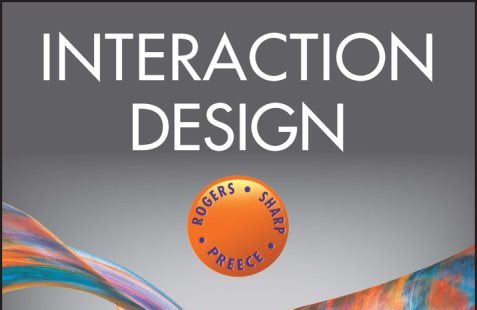
Jenny Preece, Yvonne Rogers, & Helen SharpProject type

Colleen BushellProject type

Aliza Sherman & WebgrrrlsProject type

Cathy PearlProject type

Karen HoltzblattProject type

Sabrina DorsainvilProject type
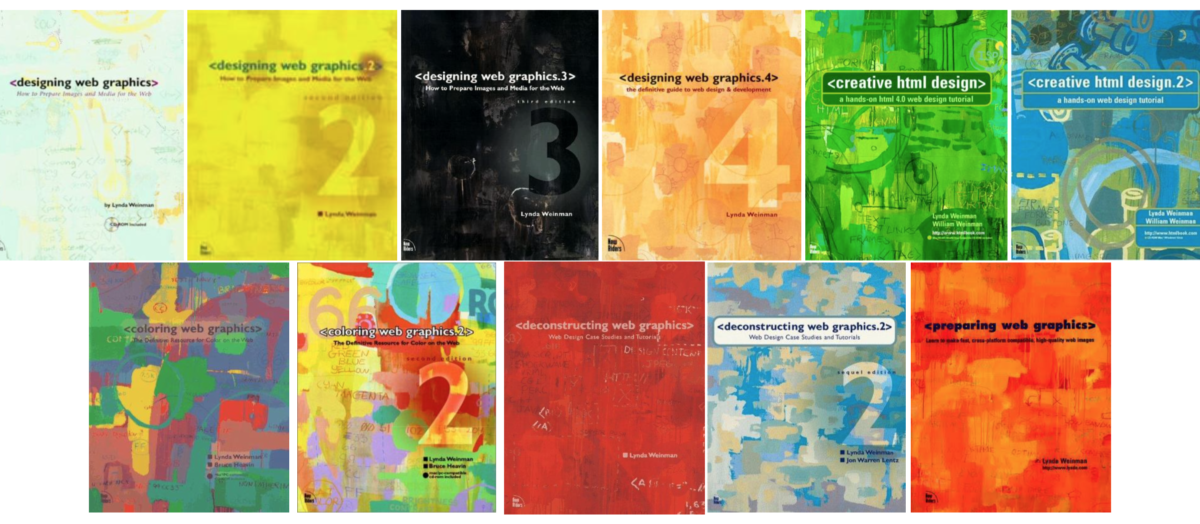
Lynda WeinmanProject type

Irina BlokProject type
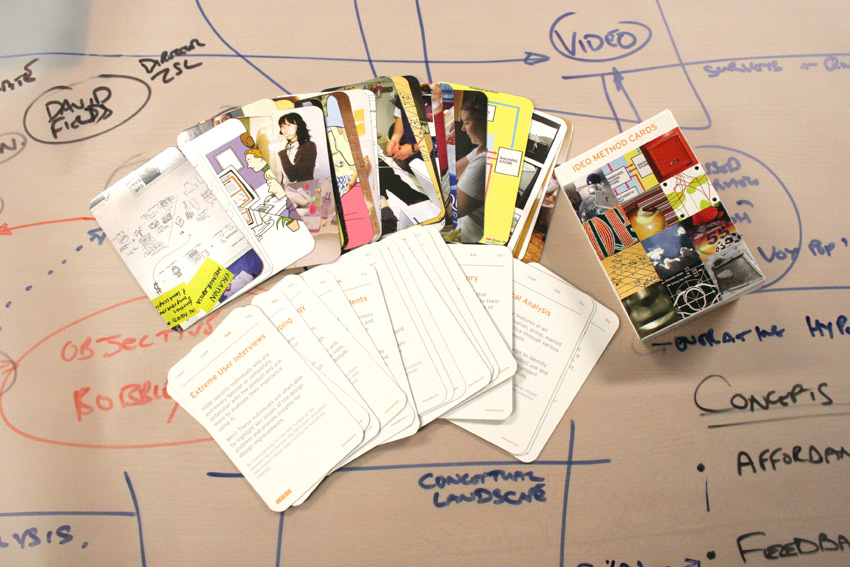
Jane Fulton SuriProject type

Carolina Cruz-NeiraProject type
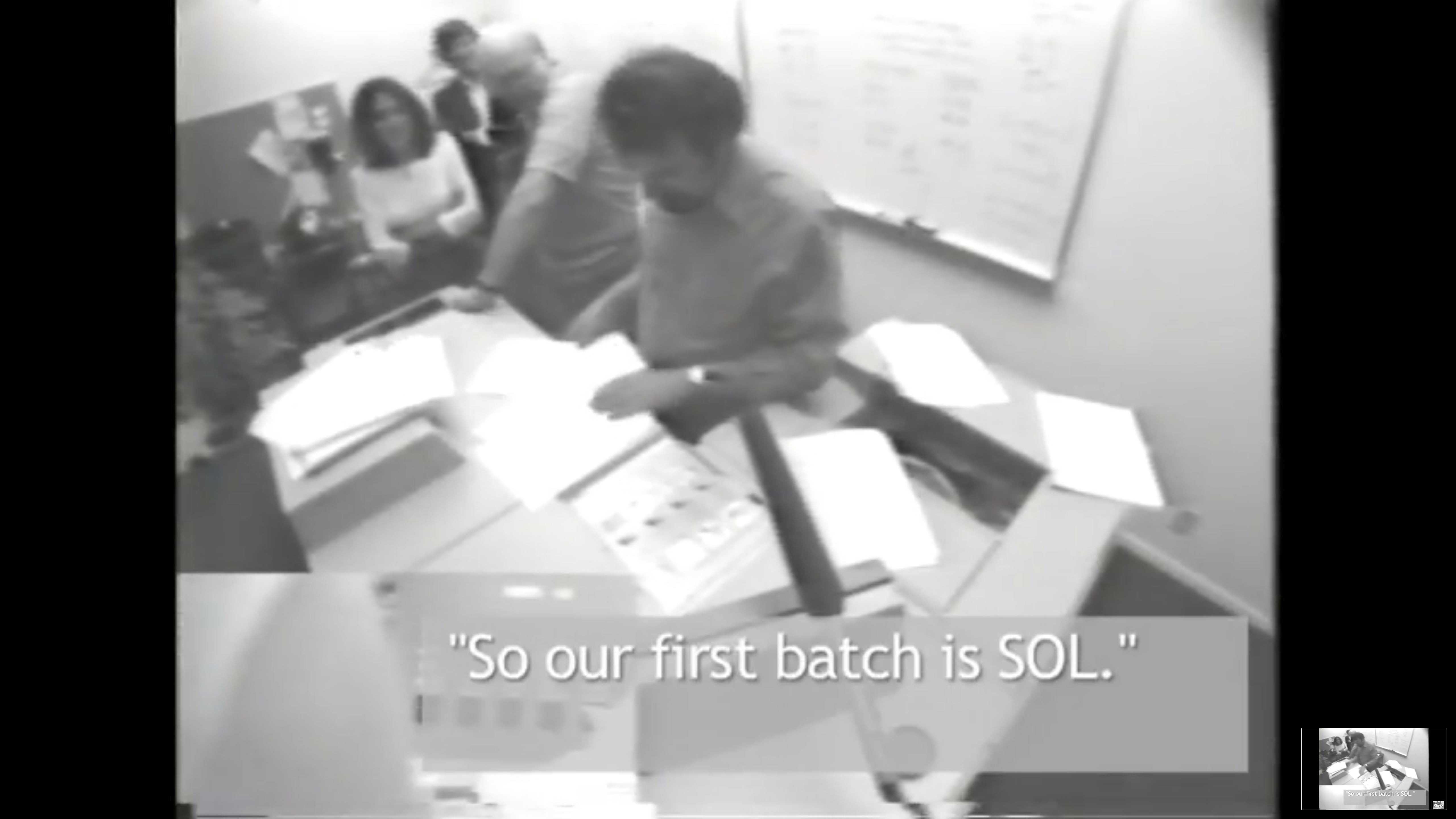
Lucy SuchmanProject type
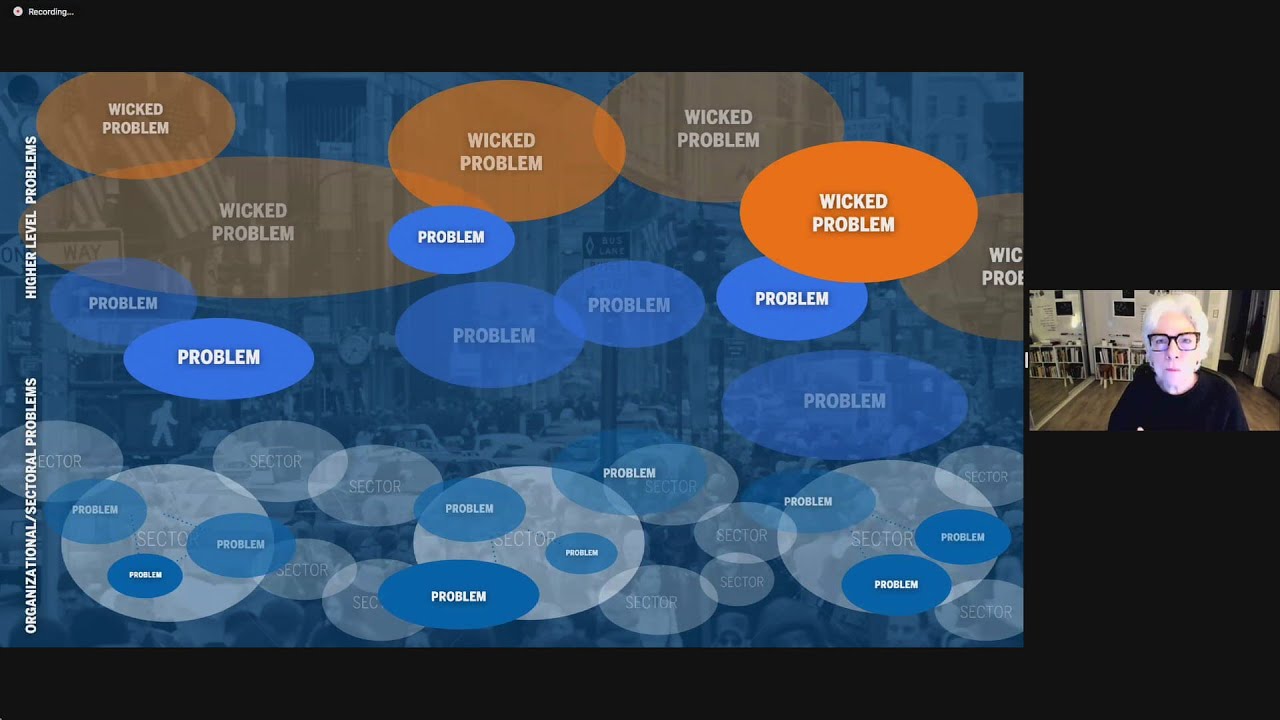
Terry IrwinProject type

Donella MeadowsProject type

Maureen StoneProject type

Ray EamesProject type
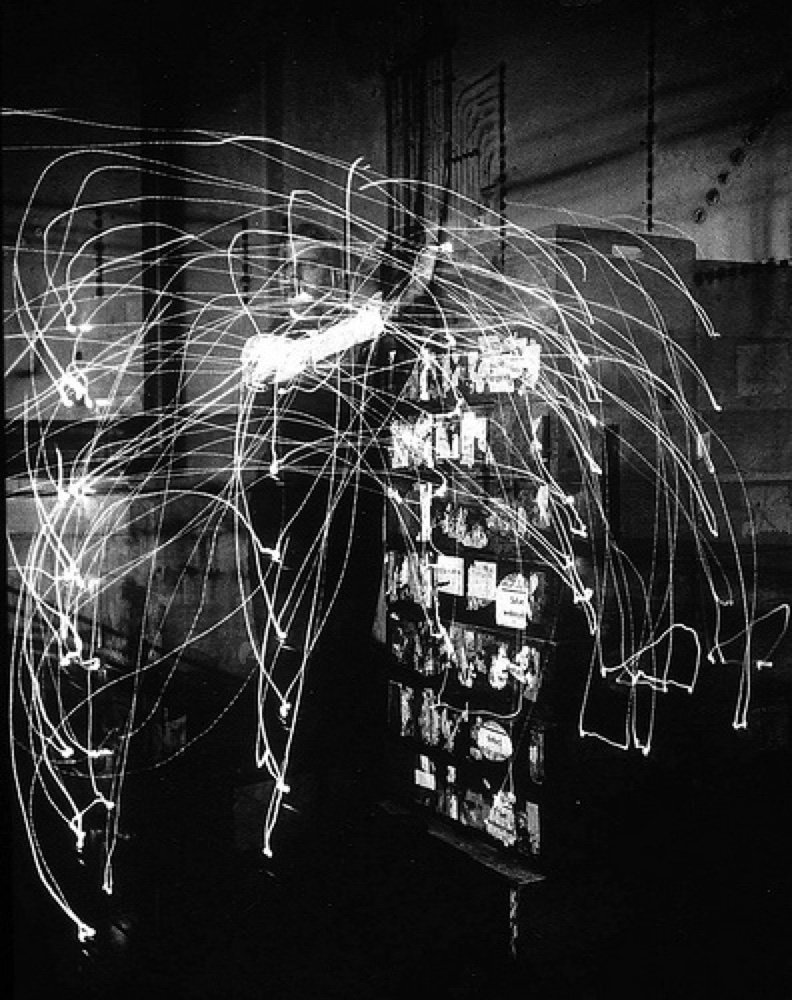
Lillian GilbrethProject type

Mabel AddisProject type

Ángela Ruiz RoblesDesigner

